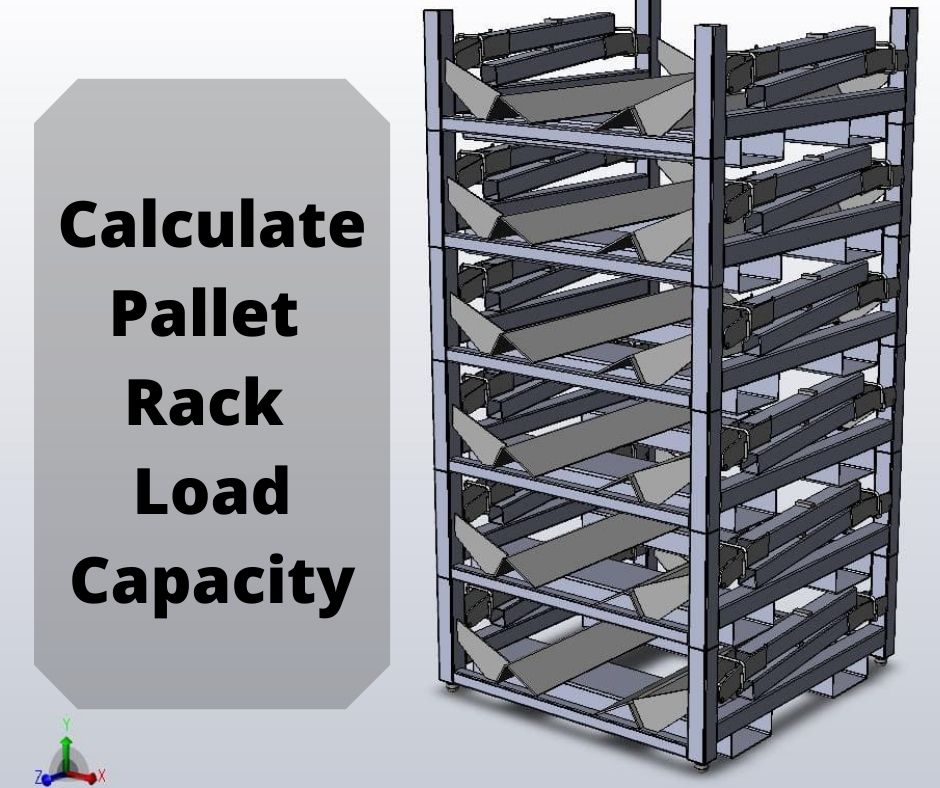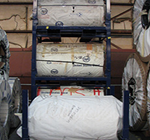How to Calculate Pallet Rack Load Capacity?
Getting pallet rack capacity wrong isn't just inefficient. It's dangerous. One miscalculation can lead to rack collapse, injured workers and thousands in damaged inventory. This guide gives you the practical knowledge to calculate capacity correctly and keep your warehouse safe.

Quick Pallet Load Capacity Calculator
Basic Formula: Required Beam Capacity = (Pallet Weight + Product Weight) × Pallets per Beam × 1.25 (Safety Factor)
Example: (50 lbs pallet + 800 lbs product) × 3 pallets × 1.25 = 3,188 lbs minimum beam capacity needed
Steps to calculate pallet load capacity:
Step 1: Calculate Your Beam Requirements
The 3-Factor Method
Factor 1: Total Pallet Load
- Standard pallet: 40-50 lbs
- Your product weight per pallet
- Combined weight = Your baseline
Factor 2: Beam Length Impact Longer beams handle less weight. Here’s the reality:
- 8-foot beam: Can handle more weight per linear foot
- 12-foot beam: Same beam type handles 20-30% less total weight
- 16-foot beam: Significant capacity reduction due to deflection
Factor 3: Load Distribution Even distribution is critical. One heavy pallet on the end of a beam creates dangerous stress points that can cause sudden failure.
Real Calculation Example
Electronics warehouse storing computer servers:
- Server pallet weight: 1,200 lbs
- Pallet weight: 50 lbs
- Configuration: 2 pallets per 10-foot beam
- Calculation: (1,200 + 50) × 2 × 1.25 = 3,125 lbs beam capacity required
- Solution: 4″ × 2″ step beam (4,500 lb capacity)
Learn more about Pallet Racking here.
Step 2: Determine Frame Capacity
Vertical Spacing Rule
Critical insight: Wider beam spacing = weaker frame capacity
Standard spacing effects:
- 72″ spacing: Full frame capacity
- 84″ spacing: ~15% capacity reduction
- 96″ spacing: ~25% capacity reduction
Frame Load Calculation:
Total Frame Load = Sum of all beam loads × Number of levels
Height penalty: Racks over 20 feet lose 10-15% capacity due to leverage effects.
Quick Frame Check
- Under 20 feet: Use standard calculations
- 20-30 feet: Reduce capacity by 15%
- Over 30 feet: Reduce capacity by 25% and require engineering review
Things to consider when determining pallet load capacity
Pallet and Product Variables
Pallet dimensions matter more than you think:
- Standard 48″ × 40″ pallet: Fits standard beam spacing
- Odd-sized pallets: May require custom beam spacing
- Pallet condition: Damaged pallets reduce load distribution
- Product overhang: Creates point loads that reduce capacity
Pro tip: Always calculate based on your heaviest anticipated load, not average load.
Beam Length and Deflection
The deflection reality:
- 8-foot beams: Minimal deflection concerns
- 12-foot beams: Monitor for visible sagging
- 16-foot+ beams: Require deflection calculations (L/180 rule)
When to choose shorter beams:
- Heavy products (>1,000 lbs per pallet)
- High-density storage
- Frequent load changes
Environmental Impact Factors:
- Temperature effects: Steel expands and contracts. In extreme temperature warehouses, add 10% safety margin.
- Forklift traffic: High-traffic areas need 35% safety factors instead of standard 25%.
- Seismic considerations: West Coast warehouses require additional 15-20% capacity reduction.
Safety Margins That Actually Work
Industry-Tested Safety Factors
- Light duty (under 1,500 lbs/pallet): 25% minimum
- Medium duty (1,500-3,000 lbs/pallet): 30% minimum
- Heavy duty (over 3,000 lbs/pallet): 35% minimum
- High-traffic areas: Add additional 10%
Load Testing Protocol
- Visual inspection: Check for obvious damage
- Gradual loading: Add weight incrementally
- Deflection measurement: Use L/180 rule (beam length ÷ 180)
- Hold test: Maintain full load for 24 hours
Red flags during testing:
- Visible beam bending
- Unusual sounds (creaking, popping)
- Connection movement
- Uneven load distribution
Common Mistakes to Avoid While Calculatng Pallet Load Capacity
1: Ignoring Dynamic Loads: Static calculations aren’t enough. Forklifts create impact loads that can be 2-3 times the static weight.
2: Using Average Weights: Always calculate for your heaviest load scenario. Seasonal peaks can overload systems designed for average loads.
3: Mixing Beam Types: Different beam types have different capacities. Never assume all beams in your warehouse have the same rating.
4: Ignoring Floor Conditions: Your rack is only as strong as your floor. Poor concrete can cause rack settling and capacity loss.
Pallet Load Capacity Reference Chart
| Product Type | Typical Weight/Pallet | Recommended Beam | Safety Notes |
| Electronics | 600-1,200 lbs | 4″ × 1.5″ Step | Watch for point loads |
| Food/Beverage | 1,000-2,000 lbs | 4″ × 2″ Step | Consider liquid shift |
| Paper Products | 800-1,500 lbs | 4″ × 1.5″ Step | Bulk but lightweight |
| Auto Parts | 1,200-2,500 lbs | 5″ × 2″ Step | Heavy, compact loads |
| Chemical/Paint | 1,500-3,000 lbs | 5″ × 2″ Heavy | Liquid load concerns |
When to Consult Professionals
Contact a qualified warehouse engineer or rack manufacturer when:
- Installing racks over 25 feet high
- Storing loads over 4,000 lbs per pallet
- Working in seismic zones (Zone 2 or higher)
- Dealing with unusual load shapes or distributions
- Local codes require engineered drawings
- Converting existing rack systems for new applications
Expert Resources and Compliance
This guide follows guidelines from:
- ANSI MH16.1 – American National Standard for Industrial Steel Storage Racks
- RMI (Rack Manufacturers Institute) – Industry best practices
- OSHA 29 CFR 1910.176 – Materials storage requirements
- IBC (International Building Code) – Structural requirements
For complex installations or regulatory compliance questions, consult with certified structural engineers and your local rack manufacturer.
If you are confused to use the correct shipping pallet rack selection that best matches your load requirements, then consider speaking and partnering with a leading rack manufacturer like SPS Ideal Solution. Over the years, the company has successfully delivered various racking solutions for critical applications in custom specifications. The company provides the pallet rack capacity system only after carefully considering the load requirements and other details.
Frequently Asked Questions
How do I calculate the safe working load (SWL) of my pallet racking?
The SWL equals your calculated load capacity divided by your safety factor. For example, if your beam can handle 4,000 lbs with a 25% safety factor, your SWL is 4,000 ÷ 1.25 = 3,200 lbs maximum working load.
What is the difference between beam capacity and frame capacity?
Beam capacity refers to the maximum weight each horizontal beam can support, while frame capacity is the total weight the entire vertical frame structure can handle across all levels. Both must be calculated separately and neither should be exceeded.
What happens if I store different weight products on the same rack?
Calculate capacity based on your heaviest anticipated load for that rack section. You can store lighter products without recalculation, but never exceed the capacity calculated for your heaviest items.
How do I account for forklift impact in my calculations?
Add a 35% dynamic load factor for areas with frequent forklift traffic, and consider the forklift’s lifting capacity and speed when calculating potential impact forces.
Related Posts:
- A Comprehensive Guide on Pallet Rack Flue Spaces
- How to Avoid Pallet Racking Mistakes?
- 7 Important Warehouse Pallet Racking Tips to Maximize Productivity
- How to Optimize the Space on Pallet Rack System?
About The Author













